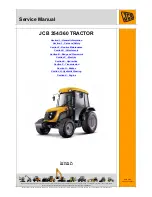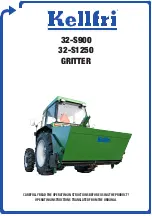
INTRODUCTION
Never adjust the fuel injection pump when the vehicle is moving.
• Never lubricate the vehicle when the engine is running.
ELECTRICAL SYSTEMS
• If it is necessary to use auxiliary batteries, the cables must be connected at both sides as follows: (+) with (+) and
(-) with (-).
• Avoid short-circuiting the terminals. GAS RELEASED FROM BATTERIES IS HIGHLY INFLAMMABLE.
• During charging, leave the battery compartment uncovered to improve ventilation.
• Do not check change by placing metal articles across battery terminals.
• Avoid sparks or flames near the battery zone to prevent explosion hazards.
• Before servicing operations, check for fuel or current leaks. Eliminate any eventual leaks before starting work.
• Never charge batteries in confined spaces. Make sure that there is adequate ventilation in order to prevent acci-
dental explosion hazards as a result of the accumulation of gases released during charging operations.
• Always disconnect the battery before performing any kind of servicing on the electrical system.
HYDRAULIC SYSTEMS
• Some fluid slowly coming out from a very small port can be almost invisible and be strong enough to penetrate the
skin. Check for leaks using a piece of cardboard, NEVER USE HANDS.
• If any liquid penetrates skin tissue, call for medical aid immediately
• Serious skin infections may result if medical attention is not given.
• Use the specific tools when checking pressure values on the hydraulic system.
WHEELS AND TYRES
• Make certain that tires are correctly inflated to the pressure indicated by the Manufacturer.
Periodically check possible damages to the rims and tires.
• Stand away from (at the side of) the tyre when checking inflation pressure.
• Only check pressure when the vehicle is unloaded and the tyres are cold, to avoid incorrect readings as a result of
over-pressure.
• Do not re-use parts of recovered wheels as incorrect welding or brazing may heat the material, causing it to weaken
and eventually damage or break the wheel.
• Never cut, nor weld a rim with the inflated tire assembled.
• When removing the wheels, lock both the front and rear vehicle wheels.
• Always position support stands when raising the vehicle, in order to conform to current safety regulations.
• Deflate the tyre before removing any object caught into the tyre tread.
• Never inflate tyres using inflammable gases; this could cause an explosion and put operator safety at risk.
REMOVAL AND RE-FITTING
• Lift and handle all heavy parts using suitable lifting equipment and make sure that all slings and hooks are correctly
secured.
• Handle all parts carefully during lifting operations, be careful to personnel working near the load to be lifted. Never
insert hands or fingers between parts, always wear approved accident prevention clothing (goggles, gloves and
work boots).
• Avoid twisting chains or metal cables and always wear safety gloves when handling cables or chains.
48038069 02/10/2017
8
Summary of Contents for FARMALL 110U
Page 9: ...48038069 02 10 2017 Find manuals at https best manuals com...
Page 10: ...INTRODUCTION 48038069 02 10 2017 1 Find manuals at https best manuals com...
Page 25: ...INTRODUCTION 48038069 02 10 2017 16...
Page 55: ...48038069 02 10 2017 10 1 10 001 28...
Page 81: ...This as a preview PDF file from best manuals com Download full PDF manual at best manuals com...












































